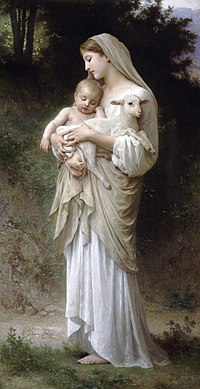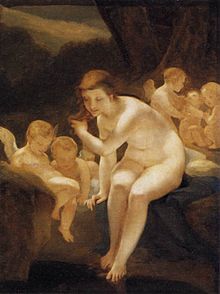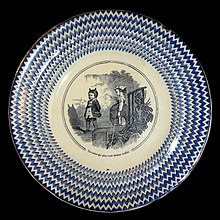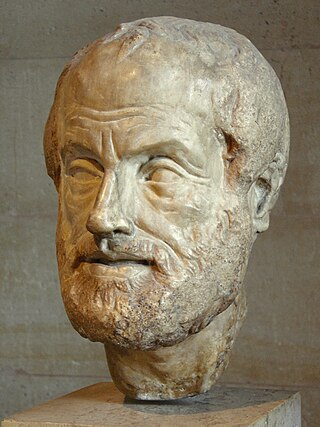

Innocence is a lack of guilt, with respect to any kind of crime, or wrongdoing. In a legal context, innocence is the lack of legal guilt of an individual, with respect to a crime. In other contexts, it is a lack of experience.


Innocence is a lack of guilt, with respect to any kind of crime, or wrongdoing. In a legal context, innocence is the lack of legal guilt of an individual, with respect to a crime. In other contexts, it is a lack of experience.
Innocence can imply lesser experience in either a relative view to social peers, or by an absolute comparison to a more common normative scale. In contrast to ignorance , it is generally viewed as a positive term, connoting an optimistic view of the world, in particular one where the lack of wrongdoing stems from a lack of Knowledge, whereas wrongdoing comes from a lack of knowledge in children. Subjects such as crime and sexuality may be especially considered. This connotation may be connected with a popular false etymology explaining "innocent" as meaning "not knowing" (Latin noscere — to know, learn). The actual etymology is from general negation prefix in- and the Latin nocere, "to harm".
People who lack the mental capacity to understand the nature of their acts may be regarded as innocent regardless of their behavior. From this meaning comes the usage of innocent as a noun to refer to a child under the age of reason, or a person, of any age, who is severely mentally disabled.
Jean-Jacques Rousseau described "childhood as a time of innocence" where children are "not-knowing" and must reach the age of reason to become competent people in society. However, as technology advances, children in the contemporary world have a platform where they are referred to as "digital natives", where they appear to be more knowledgeable in some areas than adults. [1]
"Innocence" can have a pejorative meaning, in cases where an assumed level of experience dictates common discourse or baseline qualifications for entry into another, different, social experience. Since experience is a prime factor in determining a person's point of view, innocence is often also used to imply naivety or lack of experience.

The lamb is a commonly used symbol of innocence. In Christianity, for example, Jesus is referred to as the "Lamb of God", thus emphasizing his sinless nature. [2] Other symbols of innocence include children, [3] virgins, [3] acacia branches (especially in Freemasonry), [4] [5] non-sexual nudity, songbirds, and the color white (biblical paintings and Hollywood films depict Jesus wearing a white tunic). [6] [7]
A "loss of innocence" is a common theme in fiction, pop culture, and realism. It is often seen as an integral part of coming of age. It is usually thought of as an experience or period in a person's life that leads to a greater awareness of evil, pain, and/or suffering in the world around them. Examples of this theme include songs like "American Pie", [8] poetry like William Blake's collection Songs of Innocence and of Experience, novels like To Kill a Mockingbird , The Catcher in the Rye , A Farewell to Arms , and Lord of the Flies , and films like Viridiana , The 400 Blows , and Stand By Me .
By contrast, the I Ching urges a recovery of innocence – the name given to Hexagram 25 – and "encourages you to actively practice innocence". [9]
Innocence could also be viewed as a Westernized view of childhood, and the "loss" of innocence is simply a social construction or viewed as the dominant ideology. Thinkers such as Jean-Jaques Rousseau used the romanticism discourse as a way to separate children from adults. Ideas surrounding childhood and childhood innocence stem from this discourse. [10]
The psychoanalytic tradition is broadly divided between those (like Fairbairn and Winnicott) who saw the child as initially innocent, but liable to lose its innocence under the impact of stress or psychological trauma; and those (like Freud and Klein) who saw the child as developing innocence — maturing into it — as a result of surmounting the Oedipus complex and/or the depressive position. [11]
More eclectically, Eric Berne saw the Child ego state, and its vocabulary, as reflecting three different possibilities: the clichés of conformity; the obscenities of revolt; and "the sweet phrases of charming innocence". [12] Christopher Bollas used the term "Violent Innocence" to describe a fixed and obdurate refusal to acknowledge the existence of an alternative viewpoint [13] — something akin to what he calls "the fascist construction, the outcome is to empty the mind of all opposition". [14]

Freemasonry or Masonry refers to fraternal organisations and guilds of stonemasons that, from the end of the 14th century, regulated the qualifications of stonemasons and their interaction with authorities and clients. Modern Freemasonry broadly consists of two main recognition groups: Regular Freemasonry, which insists that a volume of scripture be open in a working lodge, that every member professes belief in a Supreme Being, that no women be admitted, and that the discussion of religion and politics do not take place within the lodge; and Continental Freemasonry, which consists of the jurisdictions that have removed some, or all, of these restrictions.
Transactional analysis is a psychoanalytic theory and method of therapy wherein social interactions are analyzed to determine the ego state of the communicator as a basis for understanding behavior. In transactional analysis, the communicator is taught to alter the ego state as a way to solve emotional problems. The method deviates from Freudian psychoanalysis, which focuses on increasing awareness of the contents of subconsciously held ideas. Eric Berne developed the concept and paradigm of transactional analysis in the late 1950s.

A child is a human being between the stages of birth and puberty, or between the developmental period of infancy and puberty. It may also refer to an unborn human being. The legal definition of child generally refers to a minor, otherwise known as a person younger than the age of majority. Children generally have fewer rights and responsibilities than adults. They are generally classed as unable to make serious decisions.

Sexual behaviors in children are common and may range from normal and developmentally appropriate to abusive. These behaviors may include self-stimulation, interest in sex, curiosity towards sex and the opposite gender, exhibitionism, voyeurism, gender role behaviors and engagement in interpersonal sexual acts.

The Rose Cross is a symbol largely associated with the legendary Christian Rosenkreuz; Christian Kabbalist, alchemist, and founder of the Rosicrucian Order. The Rose Cross is a cross with a rose at its centre, often red, golden or white and symbolizes the teachings of a Western esoteric tradition with Christian tenets.
The relationship between Mormonism and Freemasonry began early in the life of Joseph Smith, founder of the Latter Day Saint movement. Smith's older brother, Hyrum, and possibly his father, Joseph, Sr. were Freemasons while the family lived near Palmyra, New York. In the late 1820s, the western New York region was swept with anti-Masonic fervor.
The child archetype is a Jungian archetype, first suggested by psychologist Carl Jung. In more recent years, author Caroline Myss has suggested that the child, out of the four survival archetypes, is present in all humans. According to Myss, its presence ranges from "childish to childlike longing for the innocent, regardless of age" and comprises sub-archetypes: "wounded child", "abandoned or orphan child", "dependent child", "magical/innocent child", "nature child", "divine child", and "eternal child".

"The Chimney Sweeper" is the title of a poem by William Blake, published in two parts in Songs of Innocence in 1789 and Songs of Experience in 1794. The poem "The Chimney Sweeper" is set against the dark background of child labour that was prominent in England in the late 18th and 19th centuries. At the age of four and five, boys were sold to clean chimneys, due to their small size. These children were oppressed and had a diminutive existence that was socially accepted at the time. Children in this field of work were often unfed and poorly clothed. In most cases, these children died from either falling through the chimneys or from lung damage and other horrible diseases from breathing in the soot. In the earlier poem, a young chimney sweeper recounts a dream by one of his fellows, in which an angel rescues the boys from coffins and takes them to a sunny meadow; in the later poem, an apparently adult speaker encounters a child chimney sweeper abandoned in the snow while his parents are at church or possibly even suffered death where church is referring to being with God.
Naivety, naiveness, or naïveté is the state of being naive. It refers to an apparent or actual lack of experience and sophistication, often describing a neglect of pragmatism in favor of moral idealism. A naïve may be called a naïf.

Representation is the use of signs that stand in for and take the place of something else. It is through representation that people organize the world and reality through the act of naming its elements. Signs are arranged in order to form semantic constructions and express relations.

"The Blossom" is a poem by William Blake, published in Songs of Innocence in 1789.

Holy Thursday is a poem by William Blake, from his 1789 book of poems Songs of Innocence.

The Art of Seduction (2001) is the second book by American author Robert Greene. The book examines social power through the lens of seduction and was an international bestseller.

"The Shepherd" is a poem from William Blake's Songs of Innocence (1789). This collection of songs was published individually four times before it was combined with the Songs of Experience for 12 editions which created the joint collection Songs of Innocence and of Experience (1794). Blake produced all of the illuminated printings himself beginning in 1789. Each publication of the songs has the plates in a different order, and sixteen other plates were published posthumously.

For the last seven years of his life Wolfgang Amadeus Mozart was a Mason. The Masonic order played an important role in his life and work.

The history of childhood has been a topic of interest in social history since the highly influential book Centuries of Childhood, published by French historian Philippe Ariès in 1960. He argued "childhood" as a concept was created by modern society. Ariès studied paintings, gravestones, furniture, and school records. He found before the 17th-century, children were represented as mini-adults.

Within the context of Freemasonry, the Chamber of Reflection, often abbreviated as C.O.R., and alternatively known as the Room of Reflection, Reflection Cabinet, or Meditation Cabinet, plays a pivotal role in the initiation process. This chamber serves as a dedicated space where a critical component of the initiation ritual unfolds, prompting the candidate to undergo a period of isolation designed to foster introspection and self-examination. The experience within the Chamber of Reflection is enriched by the presence of symbolic objects and thought-provoking phrases, which may exhibit minor variations across different Masonic rites and traditions.
"Night" is a poem in the illuminated 1789 collection Songs of Innocence by William Blake, later incorporated into the larger compilation Songs of Innocence and of Experience. "Night" speaks about the coming of evil when darkness arrives, as angels protect and keep the sheep from the impending dangers.

The Graham Children is an oil painting completed by William Hogarth in 1742. It is a group portrait depicting the four children of Daniel Graham, apothecary to King George II. The youngest child had died by the time the painting was completed.
Childhood in literature is a theme within writing concerned with depictions of adolescence. Childhood writing is often told from either the perspective of the child or that of an adult reflecting on their childhood. Novels either based on or depicting childhood present social commentaries rooted in the views and experiences of an individual. Childhood literature often offers moral imperative for the reader to combine social codes with entertainment.
{{cite journal}}: Missing or empty |title= (help)[ page needed ]